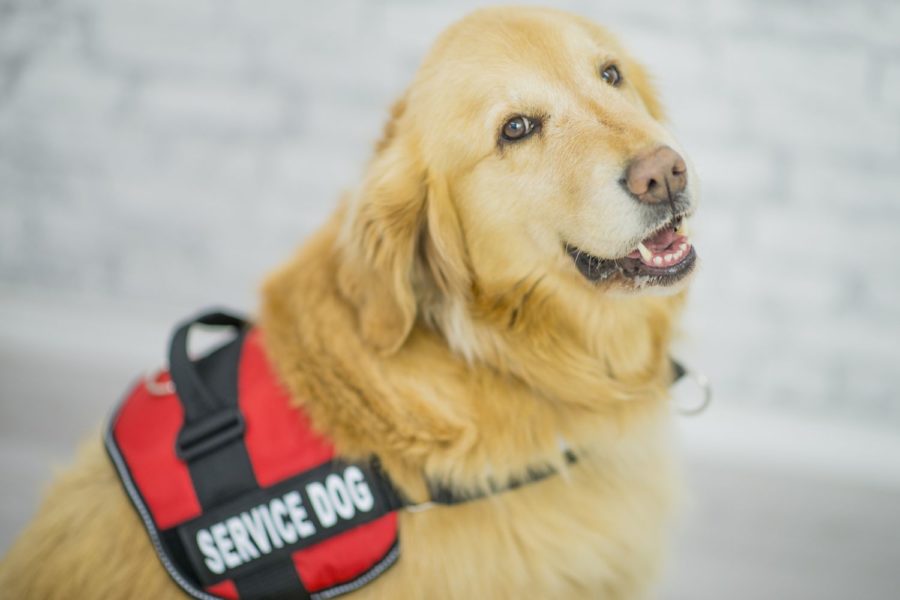The difference between service dogs, therapy dogs, how they are trained
What are service animals?
A service animal is a canine or miniature horse trained to perform specific tasks for the benefit of a disabled individual. The impairment may be bodily, psychological, or medical. Colorado limits support animals to dogs, according to the Americans with Disabilities Act. There aren’t any particular weight or height requirements for canines. Pit bulls are prohibited in Colorado, but not from serving as support animals.
In addition to providing companionship, a service dog may be able to save lives depending on the disability. A service dog may be able to save lives depending on the disability. And while they may be adorable, assistance dogs are frequently the only thing between their handler and death, so kindly remember this information whenever you are around a service dog.
What, specifically, is a service dog?
Service dogs are taught to carry out duties and activities that lessen the abilities of their handlers. Service dogs assist their disabled companions in achieving safety and independence by working as a team. It is crucial to understand that petting these dogs could impede them from doing their jobs properly. Most service dog owners have a “no petting” rule in place.
In public locations like restaurants, supermarkets, and hotels, persons with disabilities have the right to be accompanied by their service animals under the Americans with Disabilities Act (ADA). The rights of people with disabilities to be accompanied by service animals are protected by additional laws such as the Department of Transportation’s Air Carrier Access Act, the Housing and Urban Development’s Fair Housing Act, and the Federal Rehabilitation Act in a variety of situations where the ADA may not be applicable.
What is a therapy dog?
Although they receive the same training as service dogs, therapy dogs perform entirely different duties. They have to treat people who aren’t their handlers with psychological or physical treatment. These canines have calm dispositions and amiable, laid-back personalities. They frequently go to hospices, retirement homes, hospitals, and other facilities. In contrast to service dogs, therapy dogs are allowed to interact with a wide range of individuals while they are working, including being pets.
Schools, daycare centers, group homes, and rehabilitation facilities can all welcome therapy dogs as well. In these settings, therapy dogs’ functions range from helping learning-disabled children feel comfortable reading aloud to taking an active part in physical treatment. Sometimes a therapy dog only functions in a specific place, like a psychotherapy office.
Anyone can train therapy dogs, but they must adhere to certain requirements to be certified, registered, and fully involved in the program. Although their owners typically handle them, a trained professional may handle a therapy dog in some situations of animal-assisted therapy.
Training a therapy dog versus a service dog.
Arvada West librarian Josie Zoll stated that training a therapy dog, “comes down to the dog’s personality” the Arvada West librarian Josie Zoll stated when training a Therapy dog. are they unfazed by loud sounds, weird movements, or being touched anywhere? The dog must adore people, be friendly, and respect people. Some dogs are excellent candidates for the job and appreciate working. For example, dogs like Labradors have strong personalities, making them good service dogs.” Some dogs are excellent candidates for the job and appreciate working. For some people, When getting a therapy dog, locate one with a similar personality. When therapy dogs and their owners’ personalities match up, therapy dogs can do their work better.
On the other hand, service dogs are individually trained to carry out particular tasks and assist persons with disabilities, according to the Americans with Disabilities Act (ADA). Disabilities can be “physical, sensory, psychiatric, intellectual, or other mental disability,” according to the ADA. The service dog’s tasks must immediately address the handler’s disability. SA service dog can perform the following tasks: Blind individuals can navigate the world with the aid of guide dogs, Hearing (or signal) dogs warn hearing-impaired persons of sounds like a doorbell ringing or someone entering a room, a psychiatric episode can be detected and its consequences lessened by psychiatric dogs, and service dogs support people with bodily disabilities or who use wheelchairs or other assistive devices.
What to watch out for when encountering service dogs?
Having encountered a service dog, what are proper behaviors? Keep in mind that the animal is working, and their ability to concentrate on its duties is crucial to the survival of its person. Do treat the owner/handler with sensitivity and respect. Don’t touch the dog without first getting consent. Do keep any pets a safe distance from a working dog. Don’t feed a service dog.
Zoll advises simply asking the handler for instructions on how to approach and adhere to the rules when coming across a therapy dog. Zoll also shares that, variable vests have varying meanings, but you can usually read the labels on most vests to figure that out. A service dog should not be approached because it is helping its handler by working on completing a job. Even if the dog is wearing a therapy dog vest and you are in public, you should still seek permission before petting it Variable vests have varying meanings, but you can usually read the labels on most vests to figure that out. A service dog should not be approached because it is helping its handler by working on completing a job. Even if the dog is wearing a therapy dog vest and you are in public, you should still seek permission before petting it. “If you see Bloosh at school, you can just come and pet him. He loves and welcomes all pets.”
More than just “jobs,” service and therapy dogs help people with disabilities. Each of these pets offers its owner the affection and companionship that only a dog can.

Jackson has been in journalism for one year in 9th grade. He participates in sports and band. During middle school, he made second-best jazz in the state....



